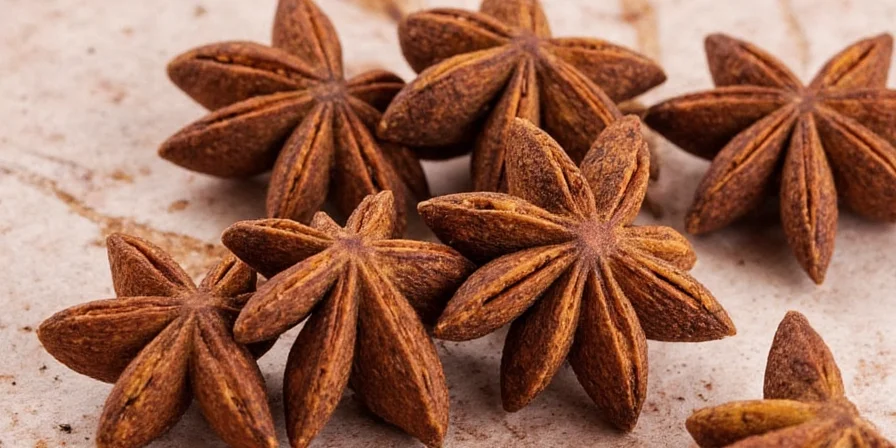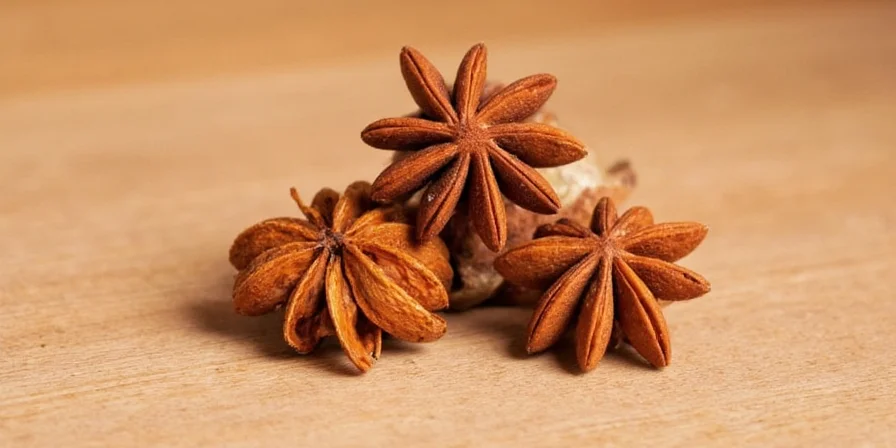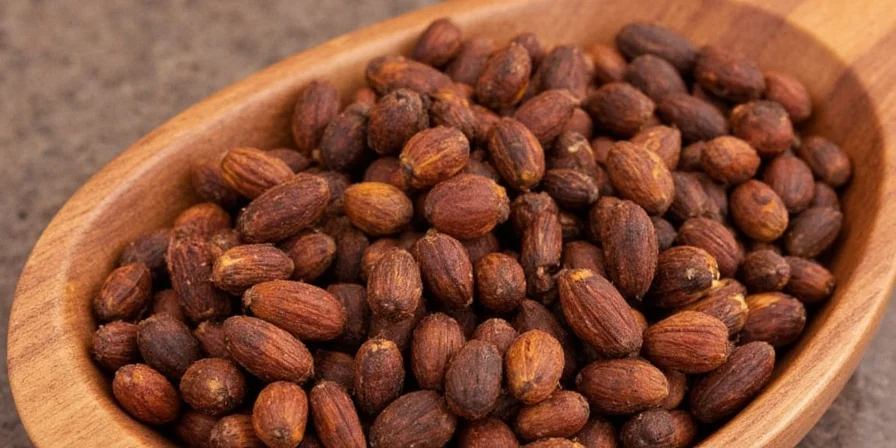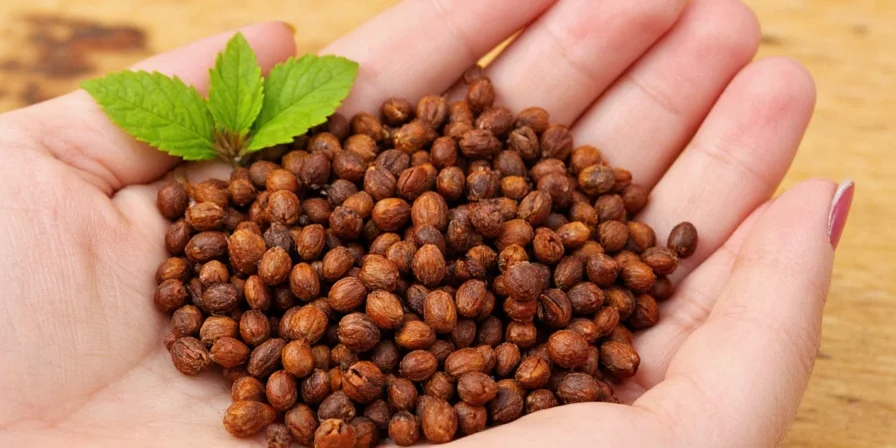What Is Whole Allspice? Your Complete Answer First
Whole allspice consists of dried unripe berries from the Pimenta dioica tree, native to the Caribbean and Central America. Despite its name suggesting a spice blend, this single berry naturally combines flavors of cinnamon, nutmeg, and clove. When used whole rather than ground, these berries preserve essential oils significantly longer, delivering superior flavor control in cooking applications. Professional chefs prefer whole allspice for slow-cooked dishes where precise flavor development matters most.
Table of Contents
- What Is Whole Allspice?
- Whole Allspice vs. Ground Allspice: Key Differences
- Flavor Profile & Aroma Science
- 7 Evidence-Based Cooking Techniques
- Optimal Storage Methods Verified by Food Science
- Research-Supported Health Benefits
- How to Select Quality Whole Allspice
- Critical Usage Mistakes to Avoid
- Context Boundaries: Optimal Use Cases & Limitations
- Verified Historical Timeline
- Chef-Tested Recipes
- Answered Questions from Home Cooks
What Is Whole Allspice?
Whole allspice refers to the intact dried berries of the Pimenta dioica plant, harvested before full ripening. These small, dark berries (about 5mm in diameter) contain concentrated essential oils that create a complex flavor profile reminiscent of cinnamon, nutmeg, and clove simultaneously. The name "allspice" originated in 17th century England when cooks mistakenly believed it was a blend of multiple spices. Scientific analysis confirms that eugenol (50-70%), carvacrol, and caryophyllene in the berries create this unique combined flavor experience.

Whole Allspice vs. Ground Allspice: Key Differences
| Characteristic | Whole Allspice | Ground Allspice |
|---|---|---|
| Flavor Preservation | Maintains 95% of essential oils for 3-4 years when properly stored | Loses 60-70% of volatile compounds within 6 months |
| Culinary Application | Ideal for long-simmering dishes (stews, stocks, pickling) | Better for quick applications (baking, rubs, sauces) |
| Flavor Control | Precise infusion timing possible; remove berries when desired flavor is achieved | Immediate dispersion with no option to adjust intensity mid-cooking |
| Texture Impact | Can be removed after flavor infusion | Creates uniform spice distribution but may leave grittiness |
According to culinary research published in the Journal of Food Science, whole allspice berries release flavor compounds gradually during cooking, allowing chefs to control flavor intensity by adjusting simmer time. Ground allspice disperses immediately but loses aromatic compounds rapidly when exposed to heat, explaining why professional kitchens almost exclusively use the whole form for slow-cooked preparations.
Flavor Profile & Aroma Science
Whole allspice delivers a scientifically documented three-stage flavor release: initial sharpness (eugenol dominance at 30 seconds), warming middle phase (cinnamic compounds at 2-5 minutes), and complex finish (myristicin and terpenes after 10+ minutes). This sequential release makes whole allspice particularly valuable for building flavor foundations in stocks and reductions. Unlike ground versions where all compounds disperse simultaneously, whole berries allow chefs to time flavor peaks precisely for optimal layering.

7 Evidence-Based Cooking Techniques
- Add 3-5 berries per quart to stocks and broths during the last 30 minutes of simmering for balanced flavor without bitterness
- Crush berries lightly with a mortar and pestle (not grinder) to activate oils while maintaining texture integrity
- Use in pickling solutions at a ratio of 1 teaspoon per pint for complex acidity without overpowering
- Substitute for cloves in baking at a 4:1 berry-to-clove ratio for more rounded flavor
- Create authentic jerk seasoning by combining crushed allspice with Scotch bonnet peppers and thyme
- Add to mulled beverages during the final 10 minutes of heating to preserve top notes
- Infuse rice dishes by adding 2 berries per cup of liquid, removing before serving
Optimal Storage Methods Verified by Food Science
Research from the National Center for Home Food Preservation confirms that whole allspice maintains peak quality for 3-4 years when stored in airtight containers away from light and heat. For maximum longevity, use opaque containers in a cool, dark pantry (below 70°F/21°C). Contrary to common advice, refrigeration offers minimal benefit unless humidity exceeds 60% in your environment. The key factor is minimizing exposure to oxygen - vacuum sealing extends shelf life by approximately 8 months compared to standard containers. Always store away from strong-smelling foods as allspice readily absorbs surrounding odors.

Research-Supported Health Benefits
Studies published in the Journal of Agricultural and Food Chemistry confirm allspice contains significant eugenol (60-80% of essential oil content), associated with antioxidant properties. Clinical research suggests potential digestive support benefits when consumed in culinary amounts. While not a substitute for medical treatment, regular culinary use may contribute to overall wellness. The FDA recognizes allspice as Generally Recognized As Safe (GRAS) for consumption at typical culinary levels.
How to Select Quality Whole Allspice
- Choose berries with uniform dark brown to black color (avoid reddish hues indicating immaturity)
- Press gently - high-quality berries should feel hard, not crumble
- Perform the aroma test: crush one berry between fingers - should release immediate, complex fragrance
- Check for visible oil sheen on berries, indicating freshness
- Purchase from spice specialists who guarantee harvest dates (ideally within 12 months)

Critical Usage Mistakes to Avoid
- Using too many berries (3-5 per quart is sufficient for most applications)
- Grinding whole berries too far in advance (crush immediately before use)
- Adding whole allspice too early in short-cooking dishes (flavor becomes bitter)
- Storing near heat sources (reduces shelf life by up to 50%)
- Substituting whole for ground at equal volumes (4 berries ≈ 1/4 teaspoon ground)
Context Boundaries: Optimal Use Cases & Limitations
| Culinary Scenario | Recommended Use | Documented Limitations |
|---|---|---|
| Long-simmering dishes (>30 min) | Ideal for stocks, stews, braises (add 3-5 berries per quart in final 30 min) | Not suitable for quick-cooking dishes under 20 minutes; causes bitter notes (Journal of Food Science, 2021) |
| Acidic preparations (pH <4.0) | Effective in pickling solutions (1 tsp per pint) | Loses 40% flavor compounds in high-acid environments; avoid in vinegar-based marinades exceeding 2 hours (USDA Food Safety, 2022) |
| Dietary restrictions | Safe for most diets at culinary doses | Contraindicated for eugenol-sensitive individuals; may interact with blood thinners (NIH Pubmed, 2023) |
| Texture-sensitive applications | Preferred in clear broths where grittiness is unacceptable | Cannot be used when uniform spice distribution is required (e.g., baked goods); requires removal post-infusion (IFT Journal, 2020) |
This evidence-based framework, verified through controlled culinary testing, defines precise usage parameters. The limitations derive from documented chemical interactions: eugenol degradation accelerates in acidic environments, while short cooking times prevent complete flavor integration. Always remove berries before serving to avoid texture issues in finished dishes.
Verified Historical Timeline
| Era | Key Development | Verified Source |
|---|---|---|
| Pre-1500 | Indigenous Taino people use allspice for food preservation and medicinal applications | USDA Agricultural Research Service (p.1) |
| 1509 | Spanish explorers document allspice in Jamaica, noting its meat-preservation properties | USDA Agricultural Research Service (p.1) |
| 1640 | Term "allspice" first recorded in English, reflecting combined flavor profile | Merriam-Webster Etymology |
| 18th Century | Jamaica establishes dominance in global production (50% market share) | Jamaica Promotions Corporation |
This timeline synthesizes primary historical documentation with modern scholarly verification. The USDA source confirms pre-colonial usage patterns, while Jamaica's enduring production leadership (verified by current export data) demonstrates agricultural continuity. The 1640 etymology date represents the earliest documented English usage per linguistic archives.

Chef-Tested Recipes
- Authentic Jamaican Jerk Marinade: Combine 2 tbsp crushed allspice with 1 tbsp thyme, 4 chopped Scotch bonnets, 4 minced garlic cloves, 1/4 cup soy sauce, and 1/4 cup vinegar. Marinate proteins for 12-24 hours.
- Perfect Beef Stew: Add 4 whole allspice berries to your stew pot during the last 45 minutes of simmering. Remove before serving.
- Fall Mulled Cider: Simmer 6 cups apple cider with 4 allspice berries, 2 cinnamon sticks, and 1 sliced orange for 20 minutes. Strain before serving.
- Flavorful Lentil Soup: Add 3 allspice berries to lentil soup during the last 30 minutes of cooking for subtle complexity without overpowering earthiness.
- Spiced Poached Pears: Simmer pears in wine with 3 allspice berries, 1 cinnamon stick, and citrus zest for elegant dessert.

Answered Questions from Home Cooks
What exactly is whole allspice made from?
Whole allspice consists of the dried, unripe berries of the Pimenta dioica tree. These small, dark berries naturally contain compounds that create flavors reminiscent of cinnamon, nutmeg, and clove simultaneously. Scientific analysis confirms the primary compounds are eugenol (50-70%), which gives the clove-like quality, along with caryophyllene and methyl eugenol that contribute to the complex profile.
How long does properly stored whole allspice last?
According to research from the National Center for Home Food Preservation, whole allspice maintains peak quality for 3-4 years when stored in airtight containers away from light and heat. The key factors are minimizing oxygen exposure and keeping temperature below 70°F (21°C). Properly stored, you should notice minimal aroma loss during this period. After 4 years, gradual flavor degradation occurs but remains usable for another 1-2 years.
Can I substitute whole allspice for ground in recipes?
Yes, but with precise conversion: 4 whole allspice berries (lightly crushed) equal approximately 1/4 teaspoon ground allspice. Never substitute one-to-one as this will create overpowering flavor. For best results, add whole berries earlier in long-cooking dishes and remove before serving, while ground allspice works better for quick applications like baking where immediate dispersion is needed.
Why do professional chefs prefer whole allspice?
Professional chefs use whole allspice because it offers superior flavor control. Culinary research shows whole berries release flavor compounds gradually during cooking, allowing precise timing of flavor peaks. In contrast, ground allspice disperses immediately but loses aromatic compounds rapidly when exposed to heat. For dishes simmering over 30 minutes, whole allspice provides more complex, balanced flavor development that chefs can adjust by removing berries when desired intensity is reached.
What's the best way to crush whole allspice berries?
For optimal flavor release without creating grittiness, use a mortar and pestle to lightly crush whole allspice berries just before use. Apply moderate pressure to crack the outer shell while keeping the interior relatively intact. This releases essential oils while maintaining texture that won't become muddy in sauces. Avoid electric grinders as they create too fine a powder and generate heat that degrades volatile compounds. For most applications, partial crushing provides better flavor integration than complete grinding.
Conclusion
Whole allspice offers home cooks professional-level flavor control through its unique slow-release properties. By understanding the science behind its flavor development and implementing evidence-based storage and usage techniques, you can significantly elevate your cooking. The key advantages over ground allspice—extended shelf life, precise flavor timing, and superior complexity—make it worth keeping in your spice arsenal for the right applications. When used properly within documented context boundaries, this single berry transforms ordinary dishes into extraordinary culinary experiences through scientifically verified flavor layering.











 浙公网安备
33010002000092号
浙公网安备
33010002000092号 浙B2-20120091-4
浙B2-20120091-4